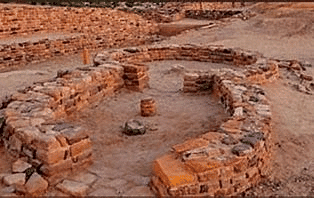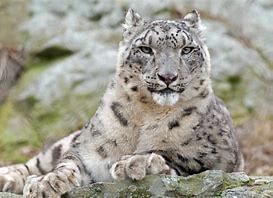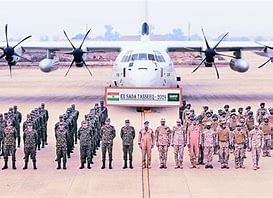UPSC Daily Current Affairs- 31st December 2024 | Current Affairs & Hindu Analysis: Daily, Weekly & Monthly PDF Download
GS-I
Dhenkanal Magji
Subject: Geography

Why in News?
Recently, Dhenkanal Magji got the GI Tag.
About Dhenkanal Magji:-
- Location: Odisha.
- Dhenkanal Magji is a type of sweet made from cheese from buffalo milk, with distinct characteristics in terms of appearance, taste, flavour, shape, and size.
- It also has unique nutritional values that distinguish it from other cheese-based sweets.
- Thousands of people were said to be earning their livelihood through animal husbandry, especially buffalo rearing, during the British era.
- The region was the hinterland of buffalo milk production and cheese was the third largest produce, after milk and curd.
- The Mandar-Sadangi area of Gondia block is believed to be the centre of origin of the sweet stuff, which has now been spread to the entire district.
- The sweet is prepared by draining moisture from the cheese and then frying it, finally forming balls from the mixture.
Source: The Hindu
India nominates 12 forts of Marathas for UNESCO World Heritage List
Subject: Art and Culture

Why in News?
India’s nomination for the UNESCO World Heritage List in 2024-25 is the “Maratha Military Landscapes of India.”
- This nomination encompasses twelve distinct components, each holding a unique place in history and culture.
- Together, they illuminate the strategic military prowess of the Maratha rulers during the 17th to 19th centuries.
Maratha Military Landscapes
- Selecting the Twelve: Maharashtra boasts more than 390 forts, with only twelve chosen for the Maratha Military Landscapes. Among them, eight are protected by the Archaeological Survey of India, including Shivneri, Lohgad, Raigad, Suvarnadurg, Panhala, Vijaydurg, Sindhudurg, and Gingee. Salher, Rajgad, Khanderi, and Pratapgarh are safeguarded by the Directorate of Archaeology and Museums, Government of Maharashtra.
- Diverse Fort Types: These forts encompass hill forts, hill-forest forts, hill-plateau forts, coastal forts, and island forts, each with its distinct historical and geographical significance.
- Historical Significance: These forts, scattered across varied geographical and physiographic regions, exemplify the Maratha rulers’ exceptional fortification and military strategies.
Maratha Military Ideology
- The origins of Maratha Military ideology can be traced back to the 17th century during the reign of Chhatrapati Shivaji Maharaj (circa 1670 CE).
- This enduring legacy continued through subsequent rules, including the Peshwa rule until 1818 CE.
Nomination and Criteria
The Maratha Military Landscapes of India is nominated in the category of cultural criteria, specifically under:
- Criterion (iii): Bearing exceptional testimony to a cultural tradition or civilization.
- Criterion (iv): Exemplifying outstanding architectural or technological ensembles representing significant stages in human history.
- Criterion (vi): Tangibly associated with events, traditions, beliefs, and works of universal significance.
India’s Rich UNESCO Heritage
- Existing World Heritage Sites: India currently boasts 42 World Heritage Sites, comprising 34 cultural sites, seven natural sites, and one mixed site.
- Maharashtra’s Contribution: Maharashtra contributes significantly to India’s heritage with six World Heritage Sites, including Ajanta Caves, Ellora Caves, Elephanta Caves, Chhatrapati Shivaji Maharaj Terminus, Victorian Gothic and Art Deco Ensembles of Mumbai, and the Western Ghats of Maharashtra, Karnataka, Tamil Nadu, and Kerala (in the natural category).
- A Cultural Gem: The Maratha Military Landscapes of India, included in the Tentative List of World Heritage sites in 2021, stands as Maharashtra’s sixth cultural property nominated for inclusion in the prestigious World Heritage List.
Source: The Hindu
GS-II
Oman
Subject: International Relations

Why in News?
Recently, Prime Minister, Shri Narendra Modi today praised a Republic Day joint India-Oman musical performance performed at the Embassy Reception at Indian embassy in Oman.
Background:-
- The Prime Minister posted on X :
“Very creative. I appreciate all those who were a part of this effort.”
About Oman:-
- Capital: Muscat.
- Oman, occupies the southeastern coast of the Arabian Peninsula at the confluence of the Persian Gulf and Arabian Sea.
- In contrast to the stark interior, the coastal regions are much more hospitable.
- Oman’s lush northern coast lies between the sea and inland mountains.
- Northern Oman is dominated by three physiographic zones.
- The long narrow coastal plain known as Al-Bāṭinah stretches along the Gulf of Oman.
- The high, rugged Ḥajar Mountains extend southeastward, parallel to the gulf coast, from the Musandam Peninsula to a point near Cape al-Ḥadd at the easternmost tip of the Arabian Peninsula.
- Much of the range reaches elevations above 4,800 feet (1,463 metres).
- Mount Shams (“Sun Mountain”), at an elevation of 9,777 feet (2,980 metres), is the country’s highest point.
- The climate is hot and dry in the interior and hot and humid along the coast.
- Arabic is the official language.
- The population of Oman is primarily urban but has a number of traditional rural settlements.
Source: PIB
Corruption Perception Index (CPI) 2023
Subject: Polity and Governance

Why in News?
India's rank in the Corruption Perception Index (CPI) 2023 has slipped to 93 out of 180 countries, with a score of 39.
About Corruption Perception Index (CPI):
- It is an annual index released by Transparency International, a global civil society organisation.
- Since its inception in 1995, the Corruption Perceptions Index has become the leading global indicator of public sector corruption.
- The CPI ranks 180 countries and territories by their perceived levels of public sector corruption on a scale of zero (highly corrupt) to 100 (very clean).
- It uses data from 13 external sources, including the World Bank, World Economic Forum, private risk and consulting companies, think tanks and others.
- The scores reflect the views of experts and business people, not the public.
- Highlights of CPI 2023:
- CPI-2023 results show that most countries have made little to no progress in tackling public sector corruption.
- CPI global average score remains unchanged at 43 for the twelfth year in a row.
- Denmark topped the index for the sixth consecutive year.
- Somalia was ranked last, other countries occupying the bottom spots included: Venezuela, Syria, South Sudan and Yemen.
- India has tied with Maldives, Kazakhstan, and Lesotho to rank at 93 out of 180 countries. In 2022, India was ranked at 85.
- Pakistan scored 29 with a rank of 133 and China, scored 42 occupying rank 76.
Source: Times of India
GS-III
LiFE (Lifestyle for Environment)
Subject: Environment and Ecology

Why in News?
Recently, a national exhibition and programme of environment-friendly activities on the LiFE (Lifestyle for Environment) themes is being organized on 9th & 10th February 2024, at India Gate, Delhi.
Background:-
- The event will highlight how the youth can inspire behavioural change that leads to individual and collective action towards an environmentally conscious lifestyle.
About LiFE (Lifestyle for Environment):-
- LiFE is an India-led global movement to nudge individuals to take simple yet effective environment-friendly actions in their daily lives.
- Aim: to bring individual behaviours to the forefront of the global climate action
- LiFE envisions replacing the prevalent ‘use-and-dispose’ economy with a circular economy, which would be defined by mindful and deliberate utilisation.
Approach:-
- Focus on Individual Behaviours: Make Life a mass movement (Jan Andolan) by focusing on behaviours and attitudes of individuals and communities.
- Co-create Globally: Crowdsource empirical and scalable ideas from the best minds of the world, through top universities, think tanks and international organisations.
- Leverage Local Cultures: Leverage climate-friendly social norms, beliefs and daily household practices of different cultures worldwide to drive the campaign.
Objectives :-
- It aims to promote an environmentally conscious lifestyle that focuses on ‘mindful and deliberate utilization’ instead of ‘mindless and wasteful consumption’.
- It aims to utilise the power of collective action.
- It aims to nudge individuals across the world to undertake simple climate-friendly actions in their daily lives.
- It aims to create and nurture a global network of individuals, namely ‘Pro-Planet People’ (P3).
- Pro-Planet People’ (P3): to have a shared commitment to adopt and promote environmentally friendly lifestyles.
- It seeks to leverage the strength of social networks to influence social norms surrounding climate.
Source: PIB
INS Sumitra
Subject: Defense

Why in News?
Recently, the Indian Navy’s INS Sumitra rescued fishermen hijacked by pirates along the east coast of Somalia and the Gulf of Aden.
Background:-
- The Iranian-flagged Fishing Vessel (FV) Iman was hijacked by pirates along the East coast of Somalia and the Gulf of Aden.
About INS Sumitra:-
- Designed and constructed: Goa Shipyard Limited.
- INS Sumitra is a new-generation naval offshore patrol vessel which has joined the Eastern Naval Command in Chennai.
- It is the fourth and last Saryu-class patrol vessel of the Indian Navy.
- It is based on an indigenous design .
- The ship has a range of 6,500 nautical miles.
- It is propelled by two diesel engines.
- It is capable of embarking one Dhruv/Chetak helicopter.
- It was commissioned in 2014 and is based in Chennai under the Eastern Naval Command.
- The primary role of the ship is to undertake surveillance of the country’s exclusive economic zone (EEZ) besides other operational tasks such as anti-piracy patrols, fleet support operations, maritime security of offshore assets, and escort operations.
- It is designed to undertake fleet support operations, coastal and offshore patrolling, ocean surveillance and monitoring of sea lines of communications and offshore assets and escort duties.
Source: Hindustan Times
Snow Leopard
Subject: Environment and Ecology

Why in News?
The first scientific survey of the snow leopard in India shows the country is home to 718 of the elusive cats, the government said recently.
About Snow Leopard:
- It is a large, long-haired Asian cat, classified as either Panthera uncia or Uncia uncia in the family Felidae.
- Geographic Range:
- Snow leopards live across a vast area in northern and central Asia's high mountains, including the Himalayan region.
- In the Himalayas, they live in high alpine areas, mostly above the tree line and up to 18,000 feet in elevation.
- They are found in 12 countries, including China, Bhutan, Nepal, India, Pakistan, Russia, and Mongolia.
- In India, it is seen in Jammu and Kashmir, Himachal Pradesh, Uttarakhand, Sikkim and Arunachal Pradesh.
- Features:
- Measuring from nose to tail, the length of an average adult is 1000 to 1300 mm.
- They have thick grey and yellow-tinged fur, with solid spots on their head, neck, and lower limbs and rosettes over the rest of the body.
- They also have very long, thick tails that they use for balancing on rocks and wrapping around their bodies for protection from the cold.
- They are solitary, and the only prolonged social contact occurs while females are raising their cubs.
- Conservation status:
- IUCN Red List: Vulnerable
- CITES: Appendix I
- Wildlife (Protection) Act 1972: Schedule I
Source: Live Mint
Exercise ‘SADA TANSEEQ’
Subject: Defense and Security

Why in News?
The inaugural edition of the India-Saudi Arabia Joint Military Exercise ‘SADA TANSEEQ’ was commenced in Rajasthan.
Exercise ‘SADA TANSEEQ’
- It is a joint military exercise conducted between the armed forces of India and Saudi Arabia.
- The exercise is designed to enhance the capabilities and interoperability of the troops from both nations in conducting joint operations in semi-desert terrains.
- It focuses on tactical training and sharing best practices in conducting operations in a sub-conventional domain.
- The primary objective is to strengthen the bond, cooperation, and camaraderie between the Indian and Saudi Arabian armed forces.
- It also serves as a platform for achieving shared security objectives and fostering bilateral relations between the two friendly nations.
Key components of the Exercise
- The exercise typically involves various military training activities such as establishing mobile vehicle checkposts, conducting cordon and search operations, house intervention drills, reflex shooting, slithering, and sniper firing.
- These activities help in building the capacity of the troops to work together effectively in semi-desert terrains, which can be crucial for addressing security challenges.
Source: First Post
|
59 videos|5398 docs|1143 tests
|

















